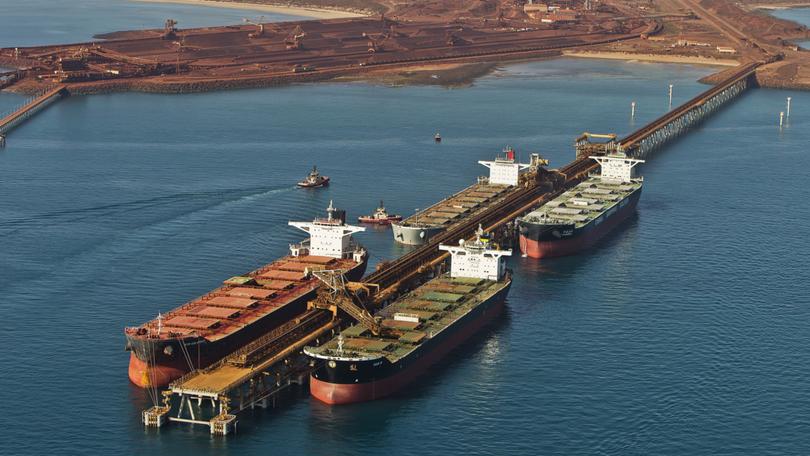Rio Tinto notches up export milestone with 4 billion tonnes of Pilbara iron ore exported to China

Rio Tinto says it has now exported enough iron ore from the Pilbara to the Middle Kingdom for the steel to build about 45,000 Sydney Harbour Bridges.
Rio on Friday shipped its 4 billionth tonne of the steelmaking input from its key Pilbara operational network into China.
The shipment was loaded at Dampier Port bound for China Baowu Steel Group, the world’s largest steel producer.
Sign up to The Nightly's newsletters.
Get the first look at the digital newspaper, curated daily stories and breaking headlines delivered to your inbox.
By continuing you agree to our Terms and Privacy Policy.The company says four billion tonnes of the commodity is enough to produce the steel needed for about 45,000 Sydney Harbour Bridges, or more than 23,000 Beijing National Stadiums, widely known as the Bird’s Nest Stadium used during the 2008 Beijing Olympics.
This milestone comes 51 years after the first shipment of almost 22,000t of Rio’s iron ore was sent from Dampier to China’s Shanghai No.1 Steel Mill, which has since become part of China Baowu.
Since then China has grown to become Rio’s largest customer by a considerable distance, with about 250 million tonnes of iron ore shipped each year to the country out of the total 330mt Rio exports annually.
Baowu has been one of these primary Chinese importers but its links with Rio extend beyond just being an end customer.
The duo are developing the $2 billion Western Range mine within Rio’s Paraburdoo hub in the Pilbara. Rio has a 54 per stake in the joint venture and Baowu the remainder.
Production from the mine is expected to commence in 2025, with an annual capacity of 25mt.
Rio Tinto Iron Ore chief executive Simon Trott said China had been a critical partner for the company and for Australia’s mining industry more broadly for more than five decades.
“China’s strong demand for high-quality minerals such as iron ore has generated substantial opportunities for investment and trade between the two countries,” he said.
“Every time I visit China and see the skyscrapers, the high-speed rail, and all the infrastructure that has helped improve the lives of 1.4 billion people, it makes me proud to think that most of what I see contains steel that was made with Rio Tinto iron ore.
“We look forward to continuing our relationship with China well into the future as we continue to deepen our strategic partnership.”
The Pilbara shipment milestones comes days after Rio was given the regulatory green light to push ahead with a $US6.2b ($9.2b) spend on developing a mega West African iron ore hub called Simandou.
The investment in developing Simandou, which has a complex ownership structure, has stoked considerable interest in the global mining industry.
If Rio and its partners are able to successfully navigate the volatile political climate in Guinea and unlock the high-grade deposits that comprise Simandou it will shake up the entire iron ore ecosystem, which is currently centred on Pilbara supply.
By the start of January Rio had also poured nearly $750m of the $9.2b into early works.
Simandou is set to export 120mt of iron ore a year at a grade of around 65 per cent once 600km of railway and port facilities are built. First production from the mine is slated for next year.
Fortescue is also casting its eye away from its Pilbara heartland and over to Africa for new avenues of iron ore growth. The company is currently ramping up production at its Belinga mine in Gabon after its first shipment late last year.
